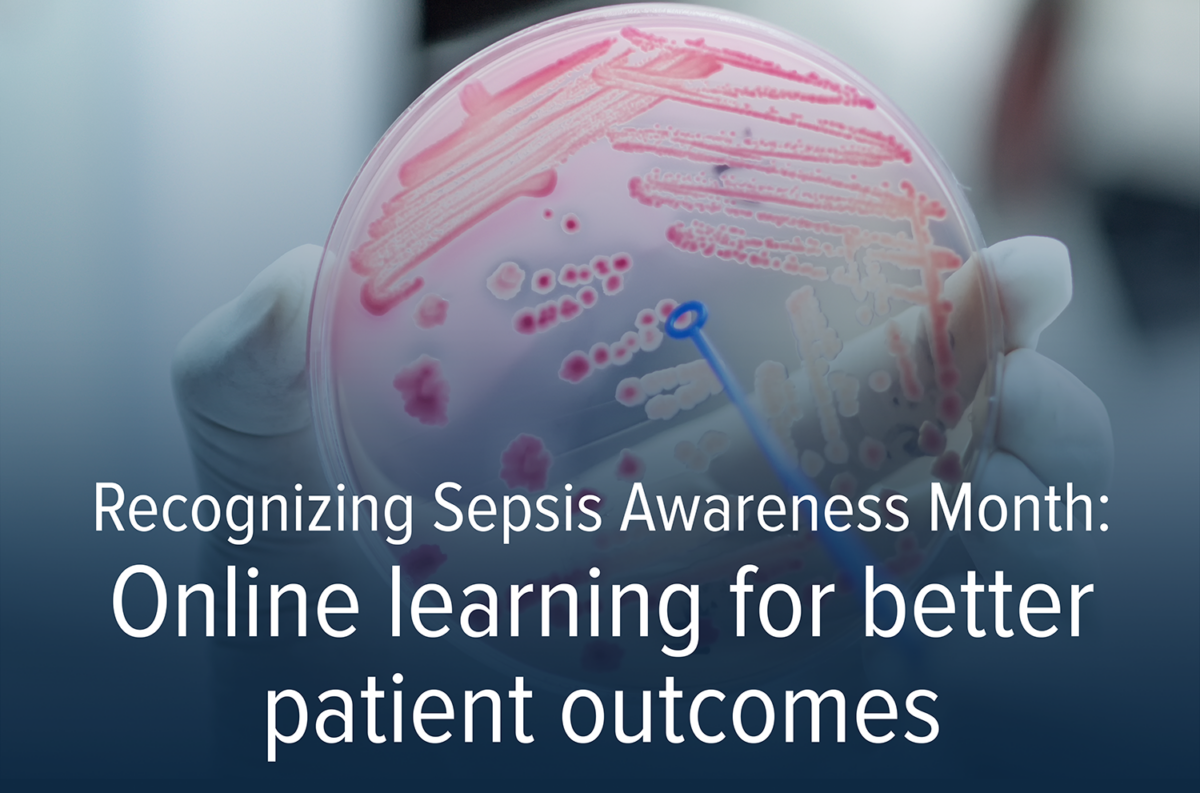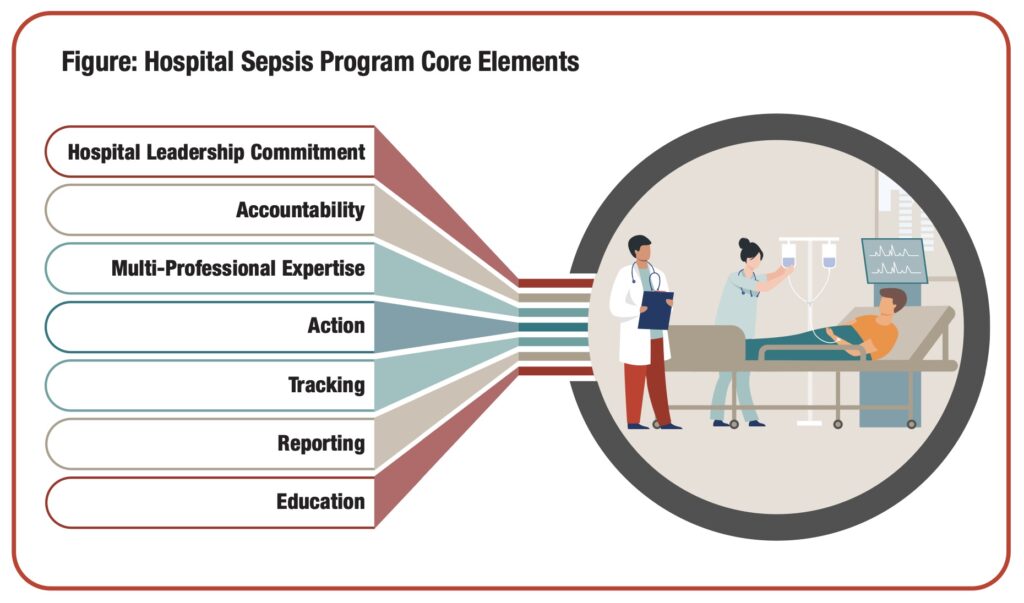
Regrettably, at least 1.7 million adults in America develop sepsis each year, leading to at least 350,000 sepsis-related deaths in the United States. On average, 87% of sepsis cases originate outside the hospital.
As sepsis continues to be a pressing issue in healthcare, action must be taken. Recently, in her first major initiative rollout as the director of the CDC, Dr. Mandy Cohen released the CDC’s Hospital Sepsis Program Core Elements. These guidelines offer a detailed roadmap for hospitals to follow to reduce deaths from sepsis in their facilities.

One of the seven core elements outlined in this roadmap is education. The CDC recommends, “For optimal sepsis treatment and outcomes, it is imperative that hospital staff have strong knowledge of sepsis and understand their role in team-based management of sepsis.” Examples of priority sepsis education include:
- Including sepsis-specific training and education in the hiring or on-boarding process for healthcare staff and trainees
- Providing annual sepsis education to clinical staff
The implementation of unified standard best practices delivered via effective education has been shown to improve patient safety, and can be applied to sepsis treatment, too.
A 2022 systemic review of thirty-two studies on the impact of sepsis education for healthcare professionals on patient outcomes concluded that most educational programs had an effective and immediate impact on knowledge levels, and simulation and game-based programs yielded better outcomes overall. It also concluded that, “Improvements in patient care processes and patient outcomes were associated with the concomitant existence or implementation of a hospital sepsis care bundle.” Effective training matters when standard best practices information needs to stick.
For example, central line-associated blood stream infections (CLABSIs) are often preventable — like sepsis — and rates can be reduced, if not eliminated, by adherence to evidence-based patient safety guidelines, reinforced by effective training. One hospital in a large Colorado healthcare system was selected to pilot the idea that CLABSIs could be addressed with training. After implementing Amplifire’s online learning platform, they experienced a 79% reduction in CLABSIs. A reduction of this magnitude has a profound effect, starting with improved patient outcomes, more confident and competent clinicians, a better bottom line, and most importantly, lives saved.
Want to learn more about how effective online learning can lead to decreased sepsis incidents and improved patient outcomes? Reach out. For more information about available sepsis courses, browse our course catalog.







